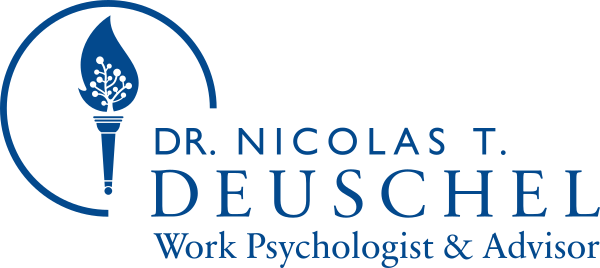Introduction: The Agile HR Paradox
The conference room falls silent as the CHRO announces yet another “Agile HR transformation.” Right on cue, consultants begin plastering walls with colorful Post-its and Kanban boards. But in three months, those Post-its will gather dust, stand-ups will become sit-downs, and another HR team will quietly abandon their Agile dreams.
After observing HR transformations for 15 years in research and practice, I’ve witnessed this scene repeat countless times. It’s time to confront an uncomfortable truth: our rush to embrace Agile methodologies in HR reflects a fundamental misunderstanding of both Agile and HR’s purpose. Worse still, misapplying Agile in HR doesn’t just waste time – it actively blocks organizational transformation.
The solution starts with understanding three distinct concepts we’ve confused. Drawing from both research and field experience, I’ll show you why most Agile HR transformations fail, and more importantly, what actually works.
The Three Faces of Agile in HR: Clarifying the Confusion
Before diving into what works and what doesn’t, we need to untangle three distinct concepts that often get confused in HR’s Agile journey:
- Organizational Agility is what boards and CEOs actually want – the ability to transform rapidly, like Microsoft’s shift from packaged software to cloud services. This requires workforce-wide adaptability.
- HR for Agile means building the foundations that enable this organizational adaptability: fluid talent systems, dynamic performance approaches, and flexible workforce models.
- Agile for HR is where most transformations mistakenly start – applying agile practices within HR itself, often with disappointing results.
Confusion arises when HR leaders jump straight into Agile practices without understanding these distinctions. Daily standups and Kanban boards don’t create value unless they serve a clear purpose.
The fundamental question isn’t “How do we make HR agile?” but rather “What role should HR play in building organizational agility?”
Where Agile Fits: Understanding HR’s Reality
At a global insurance company, I observed how enforcing Agile ceremonies across a 450-person HR department backfired spectacularly. HR Business Partners spent more time updating Kanban boards than supporting business leaders. The transformation failed not because Agile was wrong, but because it was applied blindly.
Their eventual success came from understanding different HR contexts.
When Agile Goes Right (and Wrong) in HR: Field Notes
After years of observing and advising HR transformations, three cases stand out that capture the essence of success and failure:
The Project Win
A focused HR assessment project with bi-daily stand-ups and a dedicated project manager who understood both Agile and HR. Clear scope, dedicated resources, specific deliverable. Result: Half the expected delivery time with higher stakeholder satisfaction.
The Performance Theater
A global HR team’s mandatory daily stand-ups in front of the director’s office. Stand-ups became performance reviews, real work moved to shadow meetings, and the ritual replaced purpose.
HR Business Partners spent more time updating Kanban boards than supporting business leaders. The transformation failed not because Agile was wrong, but because it was applied blindly.
The Process Prison
A Lean methodology implementation attempting to standardize HRBP work. Result: Complex activity diagrams that nobody followed, frustrated executives bypassing the system, and relationship time lost to process documentation.
From Rigid Tools to HR DNA: Building True Organizational Adaptability
The age of “Agile HR” as a blanket solution is dead. What’s emerging instead is something more sophisticated: HR functions that flex their approach based on context while maintaining necessary stability.
This evolution brings forth a new, critical role within HR – the integrator, who balances technical and relational HR needs across different stakeholder demands.
For CHROs and HR leaders, success requires three core capabilities:
- Know Your Organizational Rhythm – Where your strategy needs flexibility, where your operations need standardization, and where relationships need space to breathe.
- Match Methods to Moments – Use Agile for bounded projects, maintain stability for core compliance, and protect flexibility for relationship-based work.
- Focus on Real Impact – Prioritize stakeholder value over process metrics, business outcomes over methodology compliance.
Research supports this balanced approach. Studies demonstrate how HR creates value through relationship-based activities – from supporting line managers to helping employees navigate change. These become even more crucial in volatile environments, where HR’s role as supportive advisor helps stakeholders navigate transformation effectively.
Conclusion: A New Path Forward for HR
The future of HR lies not in methodology dogma but in thoughtful adaptation. It’s about building an HR function that can read context and apply the right approach at the right time – whether that’s using Scrum for HR technology projects or maintaining traditional methods for compliance.
For practitioners, this means focusing on value creation over methodology adoption. The goal isn’t to do Agile – it’s to enable organizational success in the most effective way possible. Sometimes that means using agile methods. Sometimes it doesn’t.
For researchers, it means returning to the field with a blank sheet of paper, observing which HR operating models actually work rather than forcing the next iteration of strategic HRM frameworks. Perhaps the most agile thing we can do is to stop theorizing about Agile and start understanding how HR really enables organizational adaptability. And this means we need to understand the ones who actually do agile: the employees, their teams, and their leaders.
What has been your experience with Agile in HR? When have you seen it succeed or fail? How have you balanced adaptability with stability in your organization?
Dr. Nicolas T. Deuschel is a strategic HR advisor and professor with over 15 years of experience in organizational change. As an executive at a Fortune 500 company and advisor to multinational organizations, he specializes in evidence-based approaches to workforce transformation and organizational adaptability.

